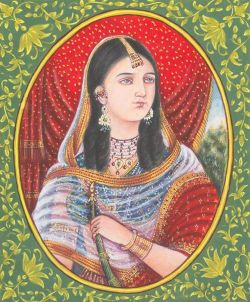Anarkali History, Wikipedia, Son

Legend has it that the 16th-century Mughal Prince Salim—later to become Emperor Jahangir—was in love with Anarkali. Scholars disagree, however, some reports claim that the tawaif Sharf-un-Nisa went by the pseudonym Anarkali.
The Tomb of Anarkali features a beautifully carved white marble cenotaph with the following inscription: "If I could see my beloved's face again, I would thank God until the day of resurrection."
Rumors and made-up stories claim that Anarkali had an extramarital affair with Salim and that Akbar, the Mughal emperor, had her imprisoned and executed. The character is frequently included in historical fiction, films, and books. Madhubala's portrayal of her can be seen in the 1960 Bollywood film Mughal-e-Azam.

History
The first record of Anarkali can be found in the notebook of William Finch, an English trader, and traveler who traveled to the Mughal Empire on August 24, 1608.
The British explorers Edward Terry and William Finch wrote the first Western descriptions of Salim and Anarkali's romance. Eleven years after Anarkali's purported demise, in February 1611, Finch traveled to Lahore on behalf of the East India Company to sell indigo he had bought in Bayana.
Anarkali was romantically involved with Prince Salim. When Akbar learned of their love, he had her confined within his royal walls, where she ultimately perished. As a sign of his affection, Jahangir had a stone tomb constructed in the middle of a gated, walled garden that was four squares in size. According to Finch's description, Jahangir commanded that the tomb's dome be adorned with gold sculptures.
A few years after William Finch's visit, Edward Terry stated that Akbar had threatened to disinherit Jahangir due to his relationship with Anarkali, the emperor's most adored wife, but that he had revoked the threat on his deathbed.
The legends
Most traditions portray maid Anarkali of Akbar's harem as a wife, a concubine, or a servant, claims Lisa Balabanlilar. Anarkali worked as a maidservant for Salim's mother, Mariam-uz-Zamani, according to Muni Lal. Several versions all agree that when Akbar realized his son Salim and Anarkali were likely in love, he became enraged and gave the order to entomb Anarkali alive in a wall. Enraged by Akbar's violence towards Anarkali, Salim rebelled against his father. Though intriguing and widely accepted, Balabanlilar goes on, the legend cannot be confirmed and most likely does not relate to a real event.
Jehangir as Majanu
Ebba Koch claims that Jahangir thought of himself as a Majnun prince monarch, driven nearly insane by his love for his cherished ones. Ebba Koch raised two Sarus cranes, Layla and Majnun, which are regarded as lovebirds in Indian tradition, until 1618. He also had his name engraved as Majnun on the sarcophagus of the Anarkali and had portraits of himself depicting him as Majnun king. With great enthusiasm, Koch wrote about his observations of their breeding. The Salim Anarkali love narrative, in the opinion of art historian Ram Nath, cannot be completely dismissed as fiction since no one would have had the guts to publicly identify themselves as a Majnun—a passionate lover—without their consent. Jahangir, according to Nath, held his father Akbar. According to Nath, Jahangir, in his memoirs, cherished his father Akbar with the highest affection. However, in 1599, he appears to have rebelled against Akbar, and the most likely explanation for this could be that Akbar hindered his delicate romance with Anarkali.
Sahib-e-Jamal
Muhammed Baqir said that the tomb of Anarkali belonged to a different Salim wife by the name of Sahib-i Jamal. She was the mother of Sultan Parvez, the prince's second son, and the daughter of the aristocratic Zain Khan Koka. On June 18, 1596, Salim married Zain Khan's daughter. Jahangir "became violently enamored of the daughter of Zain Khan Koka," according to Akbar Nama. Although Akbar was offended by the inappropriateness, he had to give his approval since he could feel his heart was being excessively influenced" [further citation(s) required] According to H. Beveridge, the translator of Akbar Nama, Akbar was against the marriage because the Prince was already wed "to Zain Khan's niece"—that is, Zain Khan's cousin, who happens to be the daughter of his paternal uncle.
Aniruddha Ray claims that the year 1599 and the name Salim are significant because they would have been written if the structure had been constructed after he assumed the throne under his disguise, Jahangir. Historians, according to Ray, believe Akbar left Lahore on November 6, 1598, therefore it would be unlikely to believe he issued the entombment order in 1599. Sahib-i Jamal, Jahangir's wife, passed away in 1599, according to Ray, hence her tomb may exist.
Sharf-un-Nissa
Haroon Khalid reports that Noor Ahmad Chishti, a chronicler, mentioned Anarkali, also known as Sharf-un-Nissa, as Emperor Akbar's preferred concubine in his Tehqiqat-i-Chishti, which was originally published in 1849. Tehqiqat-i-Chishti states that Anarkali passed away during Akbar's Deccan war. Although there is no mention of a romantic relationship between Chishti and Jahangir in his work, Khalid points out that these were the same moments when Jahangir revolted against his father, Akbar. According to Khalid, one theory is that Akbar constructed a mausoleum following his return from the Deccan expedition.
Prince Daniyal Mirza's mother
Abraham Eraly, author of The Last Spring: The Lives and Times of the Great Mughals, concluded that there "seems to have been an oedipal conflict between Akbar and Salim" based on an analysis of the two tales mentioned above. Additionally, he believes that Anarkali was Prince Daniyal Mirza's mother.
Eraly provides evidence for his theory by citing a story from Akbar's court historian Abul Fazl, who claims that one evening, guards from Akbar's royal harem attacked Salim. The incompetence of Akbar's guards allowed a lunatic to wander into his harem. Abul Fazl claims that although Salim caught the man, he mistook him for the invader. As the emperor came, he was about to use his sword until he realized who Salim was. Most likely, Prince Salim was the invader, and the narrative of the insane guy was made up to cover up the prince's immoral behavior.
As per Subhash Parihar, Prince Daniyal's mother passed away in 1596, which does not align with the British travelers' stories, making Eraly's assumption implausible.



